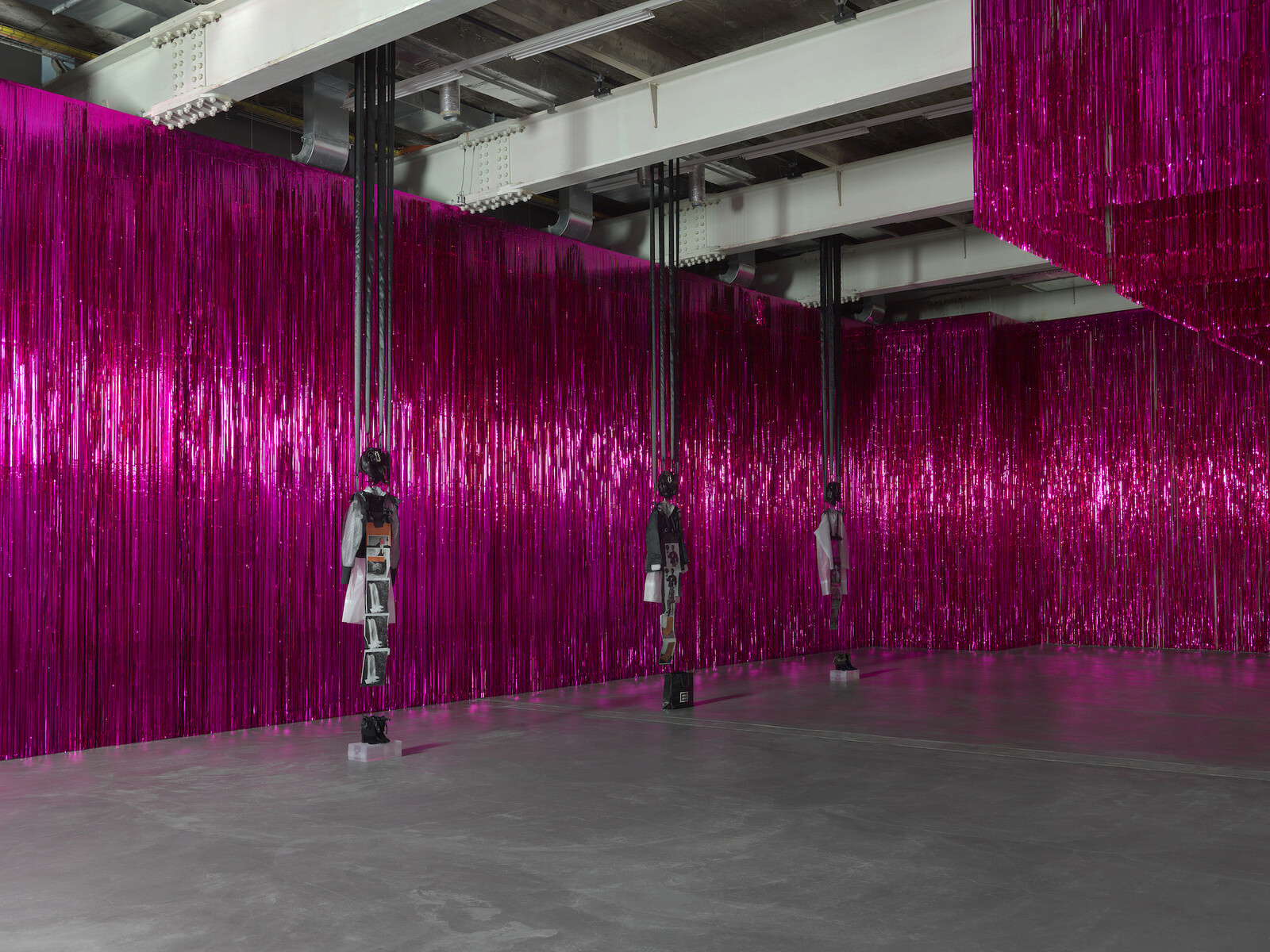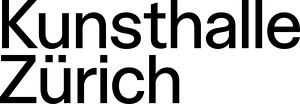Pati Hill: Something other than either
December 12, 2020–May 2, 2021
Limmatstrasse 270
CH-8005 Zürich
Switzerland
In December, Kunsthalle Zürich opened solo exhibitions by Jacqueline Fraser and Pati Hill; within days Swiss museums had to close their doors for two months. Re-emergent, we are delighted that these exhibitions are both on view until May 2.
Jacqueline Fraser’s “Making of” series have the express intent of luring a wider, non-art audience; they take cinema as their point of departure. Their cunning is not only to use existing films, but to also suggest that a candid “insider’s view” is on offer. It’s not. Instead, Fraser dissects these films for their essential elements—mood, atmosphere, tone—and these become the palette for her sculptural practice and installations. Those who come expecting a work about La Dolce Vita, Purple Rain or Legally Blonde instead find themselves immersed in a world of collaged plastics, textiles, projections, magazines and music. The films, she claims, barely matter—some of them she hasn’t even seen. But it’s hard not to draw parallels. Their protagonists are all resourceful “players” who use skill or sleight of hand to get ahead. Morality is not an issue: drug dealing, gambling, scamming, art making—all grist for the mill. Sometimes the allure of fame and fortune is the making of them and often they are driven by an unyielding dedication to craft. Almost all employ a type of self-fictionalisation, be it by alter ego, avatar or internal detachment, which they use to rise to an occasion, meet societal expectations or contest them.
Nowhere is that more evident than in the life story and world of Maria Callas. The American-born Greek soprano not only single-handedly revived the waning art of bel canto in opera, but as “La Divina,” the prima donna and global icon, delivered it to a far-reaching, spellbound audience. That character—an ever-elegant, attention-seeking society figure—shielded a vulnerable, self-conscious person; one who managed the melancholy of her childhood and unresolved personal entanglements by committing to a rapacious work ethic.
The 2017 documentary biopic Maria By Callas, directed by Tom Volf, is a starting point for Fraser’s installation at Kunsthalle Zürich. One imagines she saw in his method—found footage collage—an affinity with her own. Fraser’s is a fictitious, plastic world. Its architectural features describe an eerie entertainment space, an opera bar with repellant lighting, giant columns and pink tinsel portals. This is not an agora but the image of an alien one. There are 11 dress assemblages but no bodies within. Images of models, landscapes, gardens, artworks and accessories cascade down them. Fashion, art and commerce frivolously trade places in an endlessly self-referential exchange that reaches its apogee in an image of the Mona Lisa by Leonardo da Vinci on a handbag by Jeff Koons for Louis Vuitton. It’s tempting to read into this a critique of mass media, image circulation and consumption, but Fraser isn’t interested in theorisation at all. Just the immediate, emotive impact of the remix.
In the upper gallery, Kunsthalle Zürich follows in the footsteps of the Kunstverein Munich in showing the most comprehensive posthumous exhibition of Pati Hill’s works in Europe. Hill, who was born in 1921 and died in 2014, was both artist and equally an author, columnist, model, antiques dealer and gallerist. Her oeuvre includes four novels, short stories and artist’s publications as well as a collection of instruction manuals and the invention of a new Symbol Language (1977–78), as well as thousands of photocopies from 1974 onwards. The latter make up her central practice and are divided into different work groups such as the “Common Objects” (c. 1977–79) and “Photocopying Versailles” (c. 1980–2005).
Pati Hill’s oeuvre is not easy to classify. This may be a reason why Hill’s work is only now being seen by a broader public, for she stood apart from the canon and the avant-garde, as well as being distinct from emancipatory movements such as feminism. Hill’s artistic approach can neither be classified in conceptual art nor in Pop art or photography. She used her photocopier to capture the world, to fetishize it and to delegate the creation of art to a machine. Marshall McLuhan’s foresighted dictum “the medium is the message” from 1964 is applied literally in this work. Machines know no morality but can generate unexpected poetry, as is the case here, where mundane objects are used like words and write stories. How significant this now appears in the contemporary context of memes and social media!
Pati Hill’s estate is held by Arcadia University in Glenside (Pennsylvania). The works exhibited at Kunsthalle Zürich are all taken from this archive, which encompasses thousands of individual pages. Some copies are signed, others were framed additionally for the Munich and Zürich exhibitions. Countless subjects have been copied several times, sometimes well over a hundred times. The status of these many variations has not been conclusively explained. Hill’s work is thus at odds with the traditional terminology with which art is categorised and the idea of a single, complete work. Even though these are all copies, some are still “originals” (which seems paradoxical), while others are possible or future originals, and others are copies. But fundamentally, it doesn’t matter.
The third edition of Letters to Jill from 1979 is published on the occasion of this exhibition, a book in which Hill explains to her New York gallery Jill Kornblee how her work can be read. Letters to Jill is both instructive and filled with a humour that should not be underestimated.
Jacqueline Fraser’s exhibition is curated by Daniel Baumann and Matthew Hanson. Pati Hill’s exhibition is co-curated by Kunsthalle Zürich Director Daniel Baumann and Maurin Dietrich, Director of the Kunstverein Munich. Kunsthalle Zürich is very grateful to Richard Torchia, Director of Arcadia Exhibitions and The Pati Hill Collection at Arcadia University, Glenside (Pennsylvania) for the work loans and generous support.




